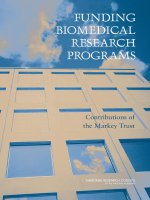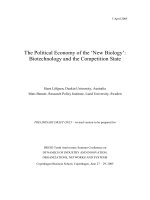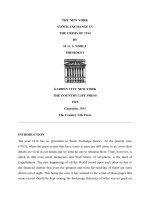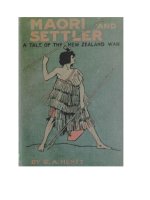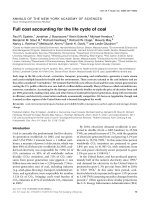ZOOLOGICA, SCIENTIFIC CONTRIBUTIONS OF THE NEW YORK ZOOLOGICAL SOCIETY V3
Bạn đang xem bản rút gọn của tài liệu. Xem và tải ngay bản đầy đủ của tài liệu tại đây (22.63 MB, 488 trang )
ZOOLOGICA
SCIENTIFIC CONTRIBUTIONS OF THE
NEW YORK ZOOLOGICAL SOCIETY
^%mi*
^i
SEP
ival
imnt,^^^
\
8 1925
mu**>^
INDEX TO
VOLUME
SEPTEMBER
Numbers
1921-1923
III
OCTOBER
1-23 Inclusive
BY THE SOCIETY
THE ZOOLOGICAL PARK, NEW YORK
PUBLISHED
19
2 5
«
ZOOLOGICA
SCIENTIFIC CONTRIBUTIONS OF THE
NEW YORK ZOOLOGICAL SOCIETY
V
FROM THE TROPICAL RESEARCH
STATION IN BRITISH GUIANA
[<^
VOLUME
III.
NUMBERS
(Tropical Research Station Contribution
1.
1
AND 2
Numbers
NOV
1
8 1921
4r.
94 and 95)
OBJECTS OF THE TROPICAL RESEARCH
STATION
By Henry Fairfield Osborn,
President of the Neiv York Zoological Society
2.
CONTRIBUTIONS OF THE TROPICAL
RESEARCH STATION, 1916 TO 1921
By William Beebe,
Director of the Tropical Research Station and Honorary Curator of Birds
PUBLISHED
THE
BY
ZOOLOGICAL
THE
SOCIETY
PARK, NEW YORK
September, 1921
General
Office:
111 Broadtvay,
New York
City
©fiirpra
President, Henry Fairfield Osborn;
Vice-Presidents, Madison Grant and Frank K. Sturgis;
Secretary, Chairman, Exec. Committee, MADISON Grant;
Treasurer, Percy R. Pyne.
UaarJj of
ManagrrH
(QlasB nf
1932
Percy R. Pyne, George Bird Grinnell, Cleveland H. Dodge,
C. Ledyard Blair, Emerson McMillin, Anthony R.
KusER, Watson B. Dickerman, Mortimer L.
ScHiFF, Frederic C. Walcott, Beekman
WiNTHROP, George C. Clark,
W. Redmond Cross.
ClaBB 0f 1023
Henry Fairfield Osborn, Lispenard Stewart, Charles
Dieterich, George F. Baker,
F.
Wm. ?ierson Hamilton,
Robert S. Brewster, Edward S. Harkness,
William B. Osgood Field, A. Barton
Hepburn, William Woodward,
Edwin Thorne, Percy A.
Rockefeller.
'
CEIlafiB
of 1024
Madison Grant, William White Niles, Henry A. C. Taylor,
Frank K. Sturgis, George J. Gould, Ogden Mills,
Lewis Rutherfurd Morris, Archer M.
Huntington, George D. Pratt, T. Coleman DuPoNT, Henry D. Whiton,
Edward Hatch, Jr.
^rtpntifir ^taff
William T. Hornaday, Director of the Zoological Park;
Charles H. Townsend, Director of the Aquarium;
Raymond
Ditmars, Curator of Reptiles;
of Birds and Director of the
Tropical Research Station;
Lee S. Crandall, Curator of Birds;
L.
William Beebe, Honorary Curator
George S. Huntington, Prosector;
George A. MacCallum, Pathologist;
W. Reid Blair,
Elwin
R.
Veterinarian;
Sanborn, Photographer and Editor.
iEiiitarial
(Enmmittrr
Henry Fairfield Osborn, Chairman;
William
T.
Hornaday,
Corrected to September, 1921
Charles H. Townsend.
ZOOLOGICA
SCIENTIFIC CONTRIBUTIONS OF THE
NEW YORK ZOOLOGICAL SOCIETY
FROM THE TROPICAL RESEARCH
STATION IN BRITISH GUIANA
VOLUME
III.
NUMBER
(Tropical Research Station Conti-ibution
1.
1
Number
94)
OBJECTS OF THE TROPICAL RESEARCH
STATION
By Henry Fairfield Osborn,
President of the
New York
Zoological Society
BY THE SOCIETY
ZOOLOGICAL PARK, NEW YORK
PUBLISHED
THE
September, 1921
Volume
III,
Number
1
OBJECTS OF THE TROPICAL RESEARCH
STATION
By Henry Fairfield Osborn.
The main object of the Tropical Research Station from the
beginning has been the observation of living organisms in their
natural environment. To make this intensive and inclusive of
the entire fauna, a single region has been selected and the fauna
studied as a whole and in detail so far as possible through the
expert knowledge of members of the staff and of the several
experts who have been invited to work at the laboratory from
time to time.
The work of the
Station, therefore, is unique in two respects
very intensive character; second, its restriction to a
single locality on the border of a great zoological region, namely,
First, its
the eastern tropical forests of the Amazonian basin. In many
biological aspects it is new, in others it is the sequel to the long,
distinguished period of exploration of this general region, begin-
ning as early as 1812. The six best known explorers of eastern
South America have been the following:
in
Charles Waterton, four voyages from 1812 to 1824, chiefly
Guiana.
Charles Darwin, 1832-1835, from Bahia around the entire
South American coast to the Galapagos.
Alfred Russel Wallace, 1848-1852, the
Negro.
Henry Walter
Para
Bates, 1848-1859, the
Amazon
basin from
to Peru.
Thomas
Belt, 1868,
Nicaragua.
in Argentina seventy-odd years ago,
England about 1890.
W. H. Hudson, born
and
Amazon and Rio
left for
Zoologica: N. Y. Zoological Society
4
[III
;
1
To Waterton we owe the pioneer review of the life of this
wonderful forest region; to Darwin, Wallace, Bates, and Belt
the intimate relations of animals and plants with each other and
with their environment, color and form adaptation, and struggle
for existence to Darwin and Hudson especially the complex chain
of relations which connect the whole series of organisms together.
;
In the work of the Station it has been found absolutely
necessary to lay a secure foundation in systematic zoology. For
this purpose efforts are being made to complete and round out the
faunal lists of various systematic workers in this region.
These
lists will
give a
common language
to the distinctive
research feature of this Station, which, as remarked above, is
intensive biologic observation in one region, in fact, in one locality, as distinguished from the observations of those who have
covered and are covering the whole biologic field of South
America.
The area chosen by our Honorary Curator of Birds, William
Beebe, when he founded the Station in 1916, is the eastern edge
of the tropical rain-forest of South America, which extends
unbroken across the greater part of the continent. The fauna
and flora are in general uniform with those of the entire Amazonian region. The locality at Kartabo, Bartica District, British
Guiana, the point of junction of the Mazaruni and Cuyuni rivers,
demonstrated in the first season its exceptional advantages as
the site for a permanent station. Within ten minutes walk are
sandy and rocky beaches, mangroves, grassland, swamp, and
high jungle, each with a growth of life peculiar to itself. Free
exposure to the trade winds, the absence of flies and mosquitos,
invariably cool nights, excellent buildings assigned by the government all these features contribute to the wide range of life and
the unbroken health of the scientific staff. The work of the year
1916 was so full of promise that Mr. Beebe, then Curator of
Birds of the New York Zoological Park, was promoted to the
rank of Director of the Tropical Research Station and given
entire charge both of the choice of the personnel and of the supervision of the scientific work.
—
The Station
is
now
entering
difficulty of transportation at the
its
sixth year.
Owing
to the
time of the war, there was a
Osborn: Reseai^ch Station Objects
1921]
lapse during 1917, but
work was resumed
5
in 1918, continued in
1919, and the present Volume hi of Zoologica opens the contributions of the year 1920-1921, which has proved to be the most
productive of
The
all.
staff of specialists, artists
and investigators has included
in the course of the past six years the following persons
William Beebe,
Director,
New York
General
Evolutionary
Columbia University and
Zoological Society
Problems
Ecology
in
Ornithology
and
Harvard University
Irving W. Bailey
Relations of Ants to Certain Plants
Donald Carter,
T.
Collector,
New York
Zoological
Society
Bryn Mawr College
Isabel Cooper, Artist
Alfred Emerson
Cornell University
Life Histories of Kartabo Termites
Gertrude Emerson
University of Chicago
Anthropology
Winifred
J.
F.
W.
J.
M. Floyd
T.
Cornell University
Emerson, Artist
University of Glasgow
Parasites of Vertebrates
M. Forbes
Organs of Hearing
Cornell University
in
Lepidoptera
University of Nebraska
H. GiFFORD
Comparative Opthalmology
G.
I.
Cornell University
Hartley
Relationships of Certain Non-oscine Birds
Rachel Hartley,
Paul
G.
Artist
New York
Bruce Museum
Howes
Studies in Hymenoptera
George W. Hunter
Carlton College
General Biology
BRITISH
BRITISH GUIANA
GUIANA
EORQETOWK
SOUTH
BRAZIL
(
J.T-Y.
FIG.
2.
LOCATION OF THE TROPICAL RESEARCH STATION OF THE
NEW YORK ZOOLOGICAL SOCIETY
The
circle represents
a radius of six miles.
1921]
7
Osboim: Research Station Objects
University of Virginia
Clifford Pope
Life Histories of Kartabo Fish
University of West Virginia
Albert M. Reese
Embryology of Crocodiles and Investigation of
Microscopical Beach Life
Columbia University
Mabel Satterlee
Coloration of Ameiva and Painting Optical Fundi
T. V.
New
Smolucha
Jersey
Photography and Pen-and-ink Drawing
Anna Taylor
South Carolina
Botanical Paintings
New York
John Tee-Van
Zoological Society
Ecology of Certain Lepidoptera
Wm. Morton Wheeler
Harvard University
Ants of Kartabo
C. A.
Wood
Leland Stanford University
Optical Fundi of Birds and Other Vertebrates
Ninetyrthree contributions have already been published from
the Tropical Research Station, of which a complete annotated list
is given in Zoologica in, No. 2. Of these eighty-nine are scientific
papers and magazine articles, while four are included in the
lowing bound volumes
fol-
Tropical Wild Life in British Guiana, by Beebe, Hartley
and Howes.
Insect Behavior, by Paul G. Howes.
Jungle Peace, by William Beebe.
Edge of the Jungle, by William Beebe.
These published observations of the Station are so broad in
scope that only a few salient features can be noted in this Introduction.
They extend from color changes and adaptations to
anatomical and physiological characters of the archaic forms of
life, like the hoatzin, as well as of the most highly modernized
and specialized forms. The colors of living amphibians and reptiles are almost an untouched field, since all modern systematic
[HI;!
Zoologica: N. Y. Zoological Society
8
zoology and description of these phyla have been founded on
alcoholic specimens, in which the colors are either modified or
lost altogether. It is only in the feathers of birds and in the coats
of mammals that the natural color hues can be preserved. The
paintings made directly from life by the artists of the Station,
Miss Cooper and Miss Satterlee, will be published in a series of
plate volumes accompanying the text volumes of ZOOLOGICA. The
opportunity of studying the faunal and floral complex and the
independent and interrelated adaptations in all grades of life,
both in the vertical and in the horizontal life zones, opens up
vistas for future research extending over many years. The vertical division of the fauna and flora into distinctive life zones,
extending from the tree summits to the sub-soil, is a biologic
contribution of first importance.
The Station was honored during the year 1920-1921 by the
presence of Dr. Wm. Morton Wheeler, who makes an extremely
important contribution to entomology in the present volume of
Zoologica through his article on A Study of Some Social Beetles
in British Guiana and of Their Relatioris to the Ant-plant Tachigalia.
Of the work of the
ing
may
Staff of the Research Station the followmentioned
be
as having been accomplished to date
Life History Notes on 445 species of birds, by Beebe
and Hartley.
Life History Notes on 106 species of reptiles and
amphibians, by Beebe.
One thousand
graphic negatives,
Smolucha.
Ten thousand
hundred and thirty-two photoby Beebe, Howes, Tee-Van and
five
feet
of
moving picture
film,
by
Tee- Van.
Collection of 340 water color drawings
by Isabel
Cooper.
Collection of types of 50
new
species of termites.
Four hundred transparent preparations of embryos
and tongues, etc.
Oshorn: Research
1921]
Statioyi Objects
Four hundred skeletons of mammals and
Nests and eggs of 132 species of birds,
birds.
many new
to
science.
Materials for a monograph on the syrinx and the
voice of tropical birds.
Collection of 75,000 insects.
Collection of 776 bird skins.
Collection of 110
embryos of
birds.
Materials for the study of the optical fundi of birds.
Monographic work on Trogons.
Cooperation with the Zoological Park, the Aquarium, the
American Museum of Natural History, and
Other Institutions
Besides the research work carried on at the Station there
are three general lines of cooperation with other institutions.
First, living organisms collected for the New York Zoological
Park and the New York Aquarium, among which the most interesting forms are the following
Birds
3 Cocks-of-the-Rock
Hawk-headed Parrot
Amazon Parrot
White-necked Rails
Bat Falcons
imThurn's Blackbird
Imperial
Rupicola nipicola (Linne)
Deroptyus accipitrinus accipitrinus (Linne)
Amazona huperialis (Richm.)
Porzana
albicollis
Vieill.
Falco rufigularis rufic/ularis Daud.
Agelaiiis imthnrni Sclater
Etc.
Mammals
Silky Anteater
Tayra
2-toed Sloth
3-toed Sloth
Spotted Cavy
Red Howling Monkey
Jaguarondi
Wild Dog
Etc.
Cyclopes didactylus clidactylus (Linne)
Tayra barhara barhara (Linne)
Choloepus didactylus (Linne)
Bradypiis tridactylus Linne
Agouti paca paca (Linne)
Alouatta sevicxibis macconneUi Elliot
Herpailnrns jagnarondi nnicolor (Traill)
Cerdocyon thoiis thoiis (Linne)
10
Reptiles
Zoologica: N. Y. Zoological Society
[III;1
1921]
Osborn: Research Station Objects
11
gren at Princeton University, for investigation of the electric
organs of these animals; (3) a large collection of birds in alcohol
has been made for Dr. C. A. Wood, for future study, at Leland
Stanford University, of the various structures of the eye.
Zoological Society,
New
York, July
12, 1921.
ZOOLOGICA
SCIENTIFIC CONTRIBUTIONS OF THE
NEW YORK ZOOLOGICAL SOCIETY
FROM THE TROPICAL RESEARCH
STATION
IN
VOLUME
BRITISH
III.
GUIANA
NUMBER
(Tropical Research Station Contribution
2.
2
Number
95)
CONTRIBUTIONS OF THE TROPICAL
RESEARCH STATION, 1916 TO 1921
By William Beebe,
Director of the Tropical Research Station and Honorary Curator of Birds
PUBLISHED
THE
BY
ZOOLOGICAL
THE
SOCIETY
PARK, NEW YORK
September, 1921
Volume
III,
Ninnher 2
CONTRIBUTIONS
OF THE
TROPICAL RESEARCH STATION
OF THE
NEW YORK
ZOOLOGICAL SOCIETY
By William Beebe.
From the date of the establishment of the Tropical Research
Station in January, 1916, to September, 1921, there have been
published ninety-three contributions. Of these, eighty-nine are
scientific
papers or magazine articles and four bound volumes.
To correlate, in convenient form, these contributions with the
more important facts set forth in them, I have prepared the following
list
1916
Contribution
1.
Number
ESTABLISHMENT OF THE TROPICAL RESEARCH STATION
William Beebe
XIX, No. 4, July, p. 1369
Hints for the formation of a tropical station, and photographs
of jungle and laboratory.
Bull. Zool. Soc.
2.
NOOSING A BUSHMASTER
William Beebe
Ibid, p. 1372
Method of capturing an eight-foot venomous snake
unharmed. Lachesis mutus (Linne)
3.
alive
and
THE COCK-OF-THE-ROCK
Lee
S.
Crandall
Ibid, p. 1375
Habits of the bird, wild and
in captivity.
Riipicola i-upicola
(Linne).
4.
NESTLING HOATZINS AT HOME
William Beebe
XIX, No. 5,
Thorough account of the
Bull. Zool. Soc.
Sept., p. 1393
and psychology of hoatzin
photographs of the chicks climbing and in the nest,
adult on nest, nest and eggs, and general environment. Opisthocomus hoazin (P.L.S. Mull.)
chicks,
activities
Zoologica: N. Y. Zoological Society
16
5.
[III
;
2
PICTURES FROM THE TROPICAL RESEARCH STATION
William Beebe and Paul
G.
Howes
Ibid, p. 1400
Photographs of
House Bats, Vampyrus
sp.,
Beesa Monkey, Pithecia pithecia (Linne)
Aracari Toucan, Pteroglossus aracari atricollis (P.L.S. Mull.)
and Akawai Indian Benab.
6.
WASPS AT THE TROPICAL RESEARCH STATION
Paul
G.
Howes
Ibid, p. 1412
Brief account of
insects
7.
and their
wasp
life
at the Station.
Photographs of the
nests.
NOTES ON THE PERAI
G.
Inness Hartley
XIX, No. 6, p. 1428
Description, habits and methods of capture, photographs
teeth and entire fish, Serrasalmo niger (Schomb.).
Bull. Zool. Soc.
8.
of
A JUNGLE-BOUND RESEARCH STATION
William Beebe and Paul G. Howes
New York Tribune, Photogravure Section, December
24th, p. 3
Photographs of
Trumpeter Chicks, Psophia crepitans Linne
Rhinoceros Beetle Grub, Megasoma actacon Linne
House Bats, Hemiderma p. pejspiciUatiim (Linne)
Beesa Monkey, Pithecia pithecia (Linne)
Young
Aracari
Toucan,
Pteroglossus
aracari
atricollis
(P.L.S. Mull.)
Young
Hoatzins, Opisthocomiis hoazin (P.L.S. Mull.)
Perai, Serrosalmo niger (Schomb.)
Giant Tree Frog, Hyla
9.
maxima
(Laur.).
ANNUAL REPORT TO THE ZOOLOGICAL SOCIETY
Annual Report, New York Zool. Soc, 1916, p.. 113
Resume of first season's work at the Station, with personal
contributions; photographs of laboratory.
1917
10.
THE ALLIGATORS OF GEORGETOWN
William Beebe
XX, No. 1, p. 1437
Life history, breeding habits, method of capture, variation of
young, photographs, drawings of young, Caiman sclerops
(Schneid.).
Bull. Zool. Soc.
1921
11.
Beebe: Research Station Contributions
17
INTERESTING BIRD'S NESTS FROM SOUTH AMERICA
William Beebe and Paul
Ibid., p.
G.
Howes
1458
of photographs of Bird's Nests from the Station.
Cayenne Hermit Hummingbird, Phoethornis superciliosus su-
Folio
perciliosus Linne
Guiana Pygmy Flycatcher, Tyranniscus acer (Salv. and God.)
Oily Flycatcher, Pipramoypha oleaginea oleaginea (Licht.).
12.
THE POMEROON TRAIL
William Beebe
Atlantic Monthly, January
Note on distribution of opossums, reptiles, insects and seeds
by floating logs and currents; account of a road newly built
from the sea through a tropical jungle; bird life of rice-fields.
13.
A NATURALIST'S TROPICAL LABORATORY
Theodore Roosevelt
Scribner's, Januai*y, p. 46.
Detailed account of the founding, the operation and the environment of the Research Station, and of jungle life as obsex'ved
on walks. Photographs of jungle, Indian huts, bats, Phyllostomus h. hastatus (Pallas), Nestling Parrots, Pioiius fuseus
(P.L.S. Mull.), and Mouse Opossum, Marmosa tnurina murina
(Linne).
14.
TROPICAL WILD LIFE IN BRITISH GUIANA
William Beebe, G. Inness Hartley and Paul
Theodore Roosevelt
Published by New York Zool. Soc.
G.
Howes, with
introduction by
General and detailed account of the first year's work of the
Station.
143 photographs by William Beebe and Paul G.
Howes. This volume contains contributions 15 to 50, which
are reviewed under their respective numbers.
15.
INTRODUCTION TO TROPICAL WILD LIFE IN BRITISH
GUIANA
Theodore Roosevelt
Introduction, p.
ix.
Character of the work accomplished at a static reseai*ch station in the tropics.
16.
ESTABLISHMENT OF THE TROPICAL RESEARCH STATION
William Beebe
Chap.
I, p. 23
Detailed account of the conception and establishment of the
Research Station at Kalacoon, on the Mazaruni River, British
Guiana. Map and photographs of the Station.
Zoologica: N. Y. Zoological Society
18
17.
[III
;
2
HISTORICAL BARTICA
William Beebe
Chap. II, p. 31
History of three hundred years of occupation by the Spanish
and Dutch.
18.
THE NATURALISTS OF BARTICA DISTRICT
William Beebe
Ill, p. 38
Brief account of the work of Schomburgk, Hilhouse, Appun,
Lloyd, iniThurn, Whitely and McConnell.
Chap.
19.
THE GENERAL FIELD OF WORK
William Beebe
Chap. IV, p. 43
General surroundings and geology;
map and photographs
of
the country.
20.
THE OPEN CLEARING AND SECOND-GROWTH
William Beebe
Chap. V,
p. 51
Succession of plant communities consequent upon clearing
primitive jungle and a subsequent four years' second growth.
Birds inhabiting the various areas.
21.
THE JUNGLE AND
ITS LIFE
William Beebe
Chap. VI,
69
p.
Temperature and lack of dangers
life
in jungle; seasons; vertical
zones of the jungle, with detailed distribution of birds and
mammals.
22.
THE BIRD LIFE OF BARTICA DISTRICT
William Beebe
Chap. VII,
91
p.
Comparison of temperate with tropical avifauna; daily and
seasonal migrations; roosting habits; northern migrants;
classification of birds as to sociability, voice, coloration, food,
friends, enemies; relations to the Indians; legal protection of
wild birds in British Guiana;
Park.
23.
collecting for
the Zoological
LIST OF THE BIRDS OF BARTICA DISTRICT
William Beebe
.
Chap. VIII,
p.
127
By a proof-reading error
on the part of one of the authors, the 22 starred species were
made to read as new to the Colony of British Guiana, instead
Classified list of 350 species of birds.
1921]
Beebe: Resea7'ch Station Contributions
19
new to Brabourne and Chubb's List of the Birds of South
America, the error being more absurd because some are among
the most abundant species. This slip was desei'vedly corrected
in a detailed article by Thomas E. Penard, (Auk, Vol. 36, No.
of
2, p.
24.
217.)
AKAWAI INDIAN AND COLONIAL NAMES OF BIRDS AND
MAMMALS
William Beebe
Chap. IX,
p.
138
of 143 species of birds and 41 species of mammals, taken orally, and after reSonfirmation, transcribed.
Akawai names
25.
METHODS OF RESEARCH
William Beebe
Chap. X,
p.
147
Methods of shooting, trapping, or otherwise
collecting
and
observing tropical organisms.
26.
FURTHER NOTES ON THE LIFE HISTORY OF HOATZINS
William Beebe
Chap. XI, p. 155
Life History Notes
of the Hoatzin, Opisthocomus hoaziv
(P.L.S. Mull.), in addition to those presented in "Ecology of
the Hoatzin," Zoologica, Vol. I, No. 2, 1909, pp. 45-66. Photo-
graphs of environment, birds, nests and eggs.
27.
THE HOMES OF TOUCANS
William Beebe
Chap. XII,
p. 183
Detailed account of discovery of breeding habits of five species
of Toucans, Red-billed Toucan, Ramphastos monilis Muller,
Sulphur-and-white-breasted Toucan, Ramphastos vitelliniis
Licht., Black-necked Aracari, Pteroglossus aracari atricollis
(P.L.S. Mull.), Green Aracari, Pteroglossus viridis (Linne),
and the Guiana Toucanet, Selenidera culilc (Wagler). Record
and description of eggs of Rarnphastos monilis, and of young
Pteroglossus aracari atricollis. Photographs of nesting sites,
eggs, young; diagrams of heel-pads of Black-necked Aracari.
28.
ORNITHOLOGICAL DISCOVERIES
William Beebe
p. 213
Detailed description of nests and eggs of seventeen species of
tropical birds which "have not heretofore been described, or
are almost unknown." (For critical discussion of this paper,
see Thomas E. Penard, Auk, Vol. 36, No. 2, p. 221).
Chap. XIII,

